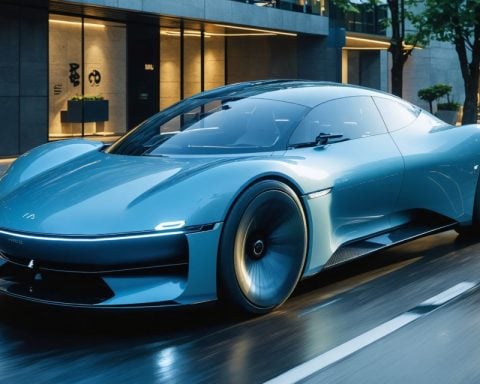- China’s NEV sales rose by 17% in early 2023, capturing a 42.42% market share.
- In January, 786,000 NEVs hit the Chinese roads, despite the Chinese New Year seasonality.
- BYD led with 300,538 NEV sales, marking a 49.16% increase.
- Tesla maintained a strong presence with 63,238 units sold.
- Xpeng and Leapmotor experienced significant growth of 267.88% and 105.02%, respectively.
- Brands like Geely, Changan, and Chery saw notable NEV sales increases.
- Li Auto reported a sales decline of 48.85% since December.
- This trend underscores China’s commitment to sustainability and its role in automotive innovation.
The start of 2023 heralded an exhilarating transformation in China’s automotive industry, with new energy vehicle (NEV) sales soaring by 17%. Eco-friendly NEVs, comprising both fully electric and plug-in hybrid models, now boast a commanding 42.42% market share. A breathtaking 786,000 NEVs hit the roads in January alone, despite a predictable lull owing to the Chinese New Year celebrations.
Leading the charge, BYD made waves with a remarkable 300,538 NEVs sold, showcasing a year-over-year increase of 49.16%. While Tesla held its ground with 63,238 units, emerging brands like Xpeng and Leapmotor dazzled with growth rates of 267.88% and 105.02%, respectively. Xpeng’s and Leapmotor’s soaring sales underscore the vibrant momentum driving China’s shift toward sustainable living.
Other market players like Geely, Changan, and Chery also saw significant boosts in NEV sales, reinforcing the electric vehicle surge capturing the imagination of Chinese consumers. Meanwhile, Li Auto faced a seasonal downturn, with numbers dipping 48.85% since December.
This electrifying trend highlights a powerful move towards sustainable transportation, underlining China’s ambitious carbon reduction goals. As consumer interest in NEVs continues to climb, it becomes clear that the electric vehicle revolution is much more than a fleeting trend; it marks a seismic shift in the way we envision the future of mobility.
With the global landscape watching closely, China’s NEV industry is not just steering toward a greener horizon but pioneering a new era in automotive innovation.
China’s NEV Revolution: The Major Players and Trends Shaping Future Mobility
How Is China’s NEV Market Forecast Expected to Evolve Over the Next Decade?
China’s NEV market is projected to continue its robust growth trajectory. Analysts predict that by 2030, NEVs could dominate the automobile market with a market share exceeding 60%. This growth is spurred by governmental policies promoting emissions reductions, advances in battery technology, and increasing consumer environmental awareness. Additionally, the government’s support through subsidies and infrastructure development plans further reinforces this optimistic forecast.
What Are the Main Innovations and Trends in China’s NEV Industry?
Several key innovations and trends are fueling the NEV expansion in China:
– Battery Technology Advancements: Continuous improvements in battery density and charging speed are enhancing the consumer appeal of NEVs.
– Autonomous Driving: Integration of autonomous driving technology is becoming a significant focus, with partnerships between tech companies and automakers blossoming.
– Environmentally Friendly Manufacturing: Companies are adopting sustainable manufacturing practices to minimize environmental impact.
Emerging players, such as Xpeng and Leapmotor, are introducing unique models that leverage AI and IoT technologies, further differentiating their offerings.
What Challenges and Limitations Face China’s NEV Market?
Despite its growth, the NEV industry faces challenges, including:
– Infrastructure Development: There is a need for more charging stations and better grid capacity to support the growing number of vehicles.
– Supply Chain Constraints: Raw material shortages, particularly for critical elements like lithium, could impact production capabilities.
– Consumer Range Anxiety: Concerns about the driving range and battery resilience during extreme weather are barriers to wider adoption.
To overcome these restrictions, strengthening partnerships with international suppliers and focusing on technological breakthroughs in battery recycling and alternative materials could prove crucial.
For more insights and updates on global automotive trends, including NEV developments, explore link name and link name.















